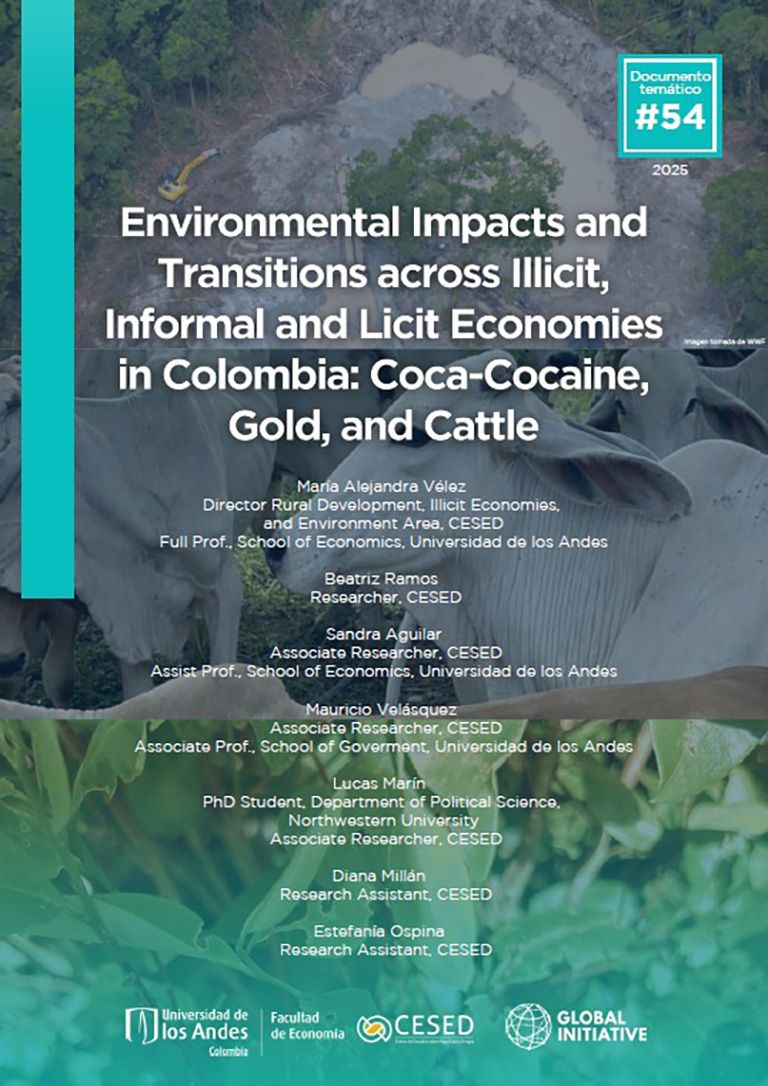
Environmental Impacts and Transitions across Illicit, Informal and Licit Economies in Colombia: Coca-Cocaine, Gold, and Cattle
María Alejandra Vélez, Beatriz Ramos, Sandra Aguilar, Mauricio Velásquez, Lucas Marín, Diana Millán, Estefanía Ospina.
Illicit economies have been related in complex ways to the armed conflict and criminal governance in Colombia (CEV, 2022; Rettberg, Cárdenas, Ortiz-Riomalo, 2017). The development of these activities, along with state responses to control them, have had significant consequences for local economies and have also impacted the environment (Brombacher, Garzón & Vélez, 2021; UNODC, 2022; UNODC, 2021; Rubiano, Vélez & Rueda, 2020). The aim of this report is to analyze the functioning of the coca, cocaine, and gold mining production markets in Colombia to assess their relationships with environmental damages, such as deforestation. In addition to the functioning of these markets, this research explores the interactions of these illicit activities with other productive sectors that also generate environmental costs, such as cattle ranching. This research was conducted using a mixed-methods approach, integrating quantitative, spatial, and qualitative data based on field work conducted in three field sites. Using quantitative and spatial methods, it presents a comprehensive analysis of national dynamics on how these economies drive deforestation, influence environmental degradation, and interact with local socio-economic dynamics. The report also includes a qualitative component with insights from case studies in Meta, Putumayo, and Nariño and a literature review of the state’s responses to the economies under study.
Ver resumen ejecutivo en español aquí
